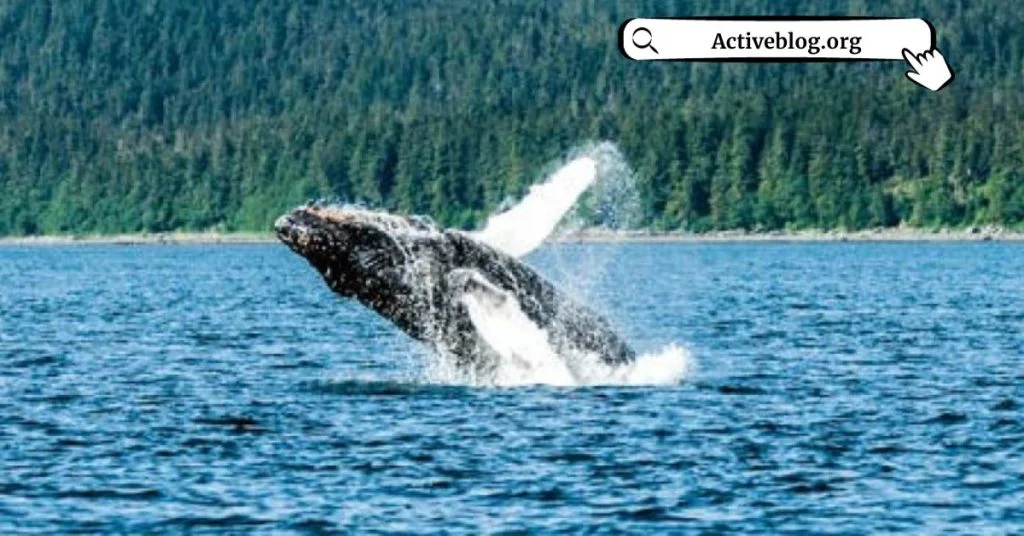Welcome to a day in the life of an Alaskan whale enthusiast, where you will embark on an extraordinary journey into the heart of the ocean.
As you set sail, anticipation builds within you, knowing that today holds the promise of witnessing magnificent creatures in their natural habitat.
With each passing moment, your eyes scan the vast expanse of water, searching for any sign of movement. Suddenly, there it is – a spout shooting up from the surface! Your heart races as you steer closer, eager to catch a glimpse of these majestic beings.
As you draw near, time seems to stand still. You marvel at their sheer size and grace as they glide effortlessly through the water. The sound of their exhales fills the air, reminding you just how small we are in comparison.
Equipped with your camera, you capture these awe-inspiring moments – freezing them in time for all to see and appreciate. But it’s not just about photography; it’s about understanding their behavior and migration patterns too.
Throughout this journey, you’ll learn about the intricate symphony of sounds that whales produce – songs that have captivated humans for centuries. As you witness firsthand their beauty and vulnerability, a deep sense of responsibility awakens within you to protect our oceans and conserve these incredible creatures.
So come aboard and join us on this unforgettable adventure – let us take you into a world where whales reign supreme and nature’s wonders never cease to amaze you.
Key Takeaways
– Alaskan whale watchers embark on a journey to witness magnificent creatures in their natural habitat.
– Whale watchers capture awe-inspiring moments with their cameras to understand whale behavior and migration patterns.
– Whales exhibit various feeding behaviors, including filter-feeding and lunge feeding.
– Conservation efforts and sustainable practices ensure future generations can witness whales in their natural habitats.
Setting Sail: Preparing for a Day on the Water
Before setting sail, it’s crucial to double-check the weather conditions and ensure all safety equipment is onboard. As an Alaskan whale watcher, preparing your equipment and taking necessary safety precautions are paramount for a successful day on the water.
Start by inspecting your vessel to make sure it’s in top condition, checking for any leaks or mechanical issues.
Next, gather essential items such as life jackets, first aid kits, emergency flares, and radio communication devices. Familiarize yourself with the location of these items and ensure they’re easily accessible in case of an emergency.
Additionally, review proper boating safety guidelines and protocols before heading out. This includes knowing how to navigate around other vessels and understanding the importance of maintaining a safe distance from wildlife.
By diligently preparing your equipment and following safety precautions, you can enjoy a thrilling adventure while keeping everyone onboard secure.
The Thrill of the Hunt: Spotting Whales in the Distance
As you scan the vast ocean horizon, anticipation builds as your eyes catch a glimpse of majestic creatures breaching the surface. The beauty of nature unfolds before you as these awe-inspiring giants reveal themselves with each graceful movement.
Spotting whales in the distance is a thrilling experience that never fails to captivate even the most seasoned whale watchers. Their sheer size leaves you in awe, as some species can reach lengths of up to 100 feet and weigh over 200 tons. These magnificent creatures navigate through the waters with remarkable agility, their streamlined bodies effortlessly cutting through the waves. Witnessing their immense power and grace is a reminder of just how small we are in comparison to the wonders of the natural world.
Every sighting is an opportunity to witness firsthand the incredible beauty and majesty that exists within our oceans.
Up Close and Personal: Observing Whales in Their Natural Habitat
Get ready for an unforgettable experience as you come face to face with these majestic creatures in their natural habitat. Observing whales up close allows you to witness their intricate communication system firsthand.
Whales communicate through a series of vocalizations, such as songs, clicks, and whistles. These sounds serve various purposes, from attracting mates to locating food sources.
As you watch them glide effortlessly through the water, take note of their unique anatomy. Whales have streamlined bodies and powerful tails that propel them through the ocean with grace and speed. The blowholes on top of their heads allow them to breathe without fully surfacing. You’ll also notice their large flippers, which aid in steering and maneuverability.
Take this opportunity to learn about these fascinating creatures and appreciate the complexity of their lives in the vast Alaskan waters.
– Vocalizations: Songs, clicks, whistles
– Streamlined bodies: Efficient movement in water
– Blowholes and flippers: Unique adaptations for survival
Capturing the Moment: Tips for Photographing Whales
Make sure you bring your camera along on the whale-watching adventure, capturing breathtaking shots of these majestic creatures as they glide through the water. To capture the perfect shot of whales, it’s important to understand their behavior and adapt your photography techniques accordingly.
Firstly, be patient and observant. Whales often surface for a short period before diving back down, so keep your eyes peeled for any signs of activity.
Secondly, study their movements. By understanding how they swim and breach, you can anticipate when and where to position yourself for the best shot.
Lighting is crucial when photographing whales. Aim to shoot during the golden hours – early morning or late evening – when the light is soft and warm. This will enhance the details in your photographs and create a more dramatic effect.
Lastly, use a telephoto lens to bring distant whales closer and emphasize their size and beauty. It allows you to capture intricate details like barnacles or scars on their skin.
By following these tips and respecting the natural habitat of these magnificent creatures, you can capture stunning photographs that showcase their grace and power.
The Circle of Life: Learning about Whale Behavior and Migration
Whales fascinate us not only with their majestic presence but also with their intricate behaviors and remarkable migration patterns. Understanding these patterns and behaviors is crucial for any aspiring whale watcher.
Here are three key aspects to consider:
– Whale Migration Patterns: Whales undertake some of the longest migrations in the animal kingdom, traveling thousands of miles in search of food and suitable breeding grounds. Their journey is influenced by factors such as water temperature, availability of prey, and reproductive needs.
– Feeding Behaviors: Whales exhibit a variety of feeding techniques depending on their species and habitat. Some whales filter-feed by taking in large volumes of water and filtering out small organisms using baleen plates. Others engage in lunge feeding, where they accelerate towards prey at high speeds before engulfing them.
– Cooperative Feeding: Certain whale species display cooperative feeding strategies where they work together to increase their chances of capturing prey. This behavior involves coordinated movements, vocalizations, and bubble-netting techniques to corral fish into concentrated areas for easier capture.
By delving into the intricacies of whale migration patterns and feeding behaviors, we can gain a deeper appreciation for these magnificent creatures while enhancing our ability to observe them in their natural habitats.
A Symphony of Sounds: Listening to the Songs of Whales
Immerse yourself in the captivating melodies of the ocean as you listen to the enchanting songs sung by these majestic creatures. Underwater acoustics play a crucial role in understanding whale communication.
Whales produce sounds through various mechanisms, including vocal cords and air sacs. These sounds travel long distances underwater, allowing them to communicate with other members of their pod. The different types of whale songs serve different purposes, such as mating calls or establishing territory.
Whale songs are complex and can last for hours, consisting of repetitive patterns and distinct phrases. Researchers have discovered that each population of whales has its own unique song, which evolves over time. They use hydrophones to record these songs and analyze them to gain insights into whale behavior and migration patterns.
Understanding whale communication is essential for conservation efforts and for protecting these magnificent creatures’ habitats. By studying their songs, scientists can better understand their social structure, reproductive behavior, and overall well-being.
So next time you find yourself on an Alaskan whale-watching adventure, take a moment to appreciate the symphony of sounds that echo beneath the waves – it’s truly a marvel of nature’s beauty.
Protecting Our Oceans: Conservation Efforts for Whales
Surrounded by the vast expanse of the ocean, we’re called to action in safeguarding the homes of these majestic creatures through conservation efforts. Whales, as keystone species, play a crucial role in maintaining the health and balance of marine ecosystems.
To protect them, we must adopt sustainable practices that minimize our impact on their habitats. Conservation efforts for whales involve a multi-faceted approach aimed at preserving their populations and habitats. Here are three key strategies:
1. Implementing strict regulations: Governments around the world have established protected areas and implemented laws to limit activities that harm whales, such as noise pollution from shipping vessels or hunting.
2. Promoting responsible whale watching: Encouraging tourists and operators to follow guidelines for respectful observation helps minimize disturbance to whales while still allowing people to experience their beauty.
3. Supporting research and education: By funding scientific studies and raising awareness about whales’ importance, we can further understand their needs and inspire others to join the cause.
Through these conservation efforts and sustainable practices, we can ensure that future generations will also have the privilege of witnessing these magnificent creatures in their natural habitats.
A Lasting Impression: Reflecting on a Day of Whale Watching in Alaska
After spending a day actively participating in the conservation efforts for whales, it’s time to reflect on the incredible experience of whale watching in Alaska.
As you sit back and reminisce about the awe-inspiring sights and sounds of these majestic creatures, you can’t help but feel a deep connection with nature.
The sheer size and power of the humpback whales as they breach the surface, their melodic songs echoing through the crisp Alaskan air, leave a lasting impression on your soul.
Reflecting on this extraordinary day, you realize how fortunate you are to witness these gentle giants in their natural habitat.
It’s moments like these that remind us of our responsibility to protect and preserve our oceans and all its inhabitants.
Connecting with nature in such an intimate way not only fills your heart with joy but also ignites a passion within you to continue supporting conservation efforts for these magnificent creatures.
Conclusion
As you reflect on your day of whale watching in Alaska, you can’t help but be amazed by the incredible sights and experiences you had. From spotting whales in the distance to observing them up close in their natural habitat, every moment was filled with wonder.
You learned about their behavior and migration patterns, listened to their captivating songs, and even captured some breathtaking photographs.
As you sail back to shore, you are reminded of the importance of conservation efforts to protect these majestic creatures and our precious oceans.
Your day as an Alaskan whale watcher will leave a lasting impression on your heart and mind.










